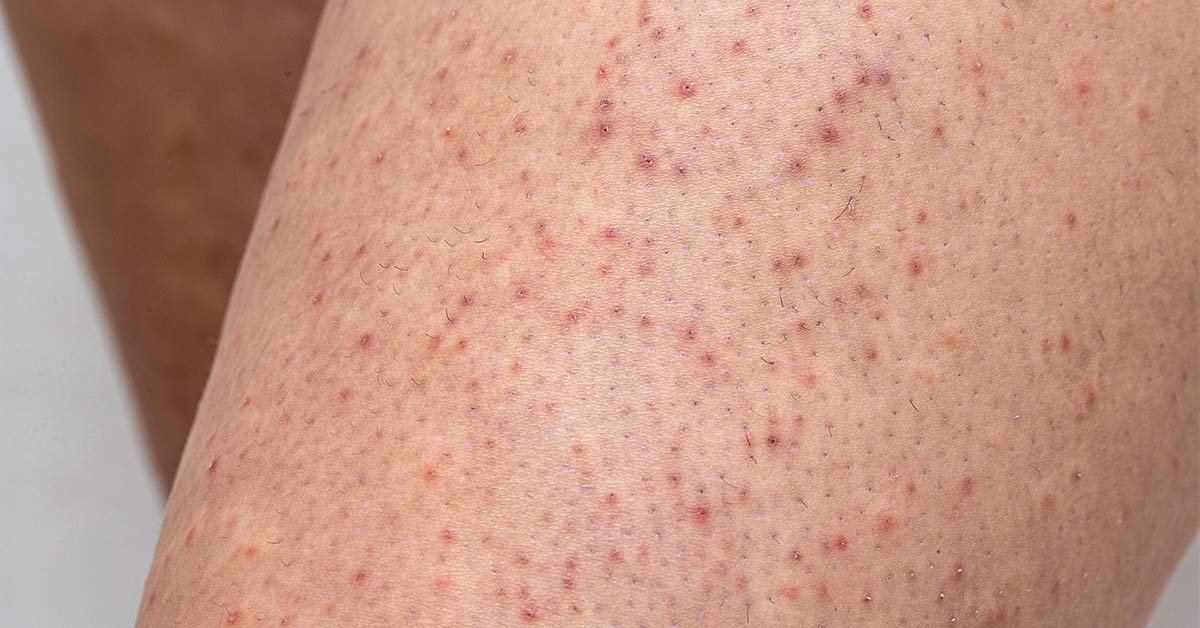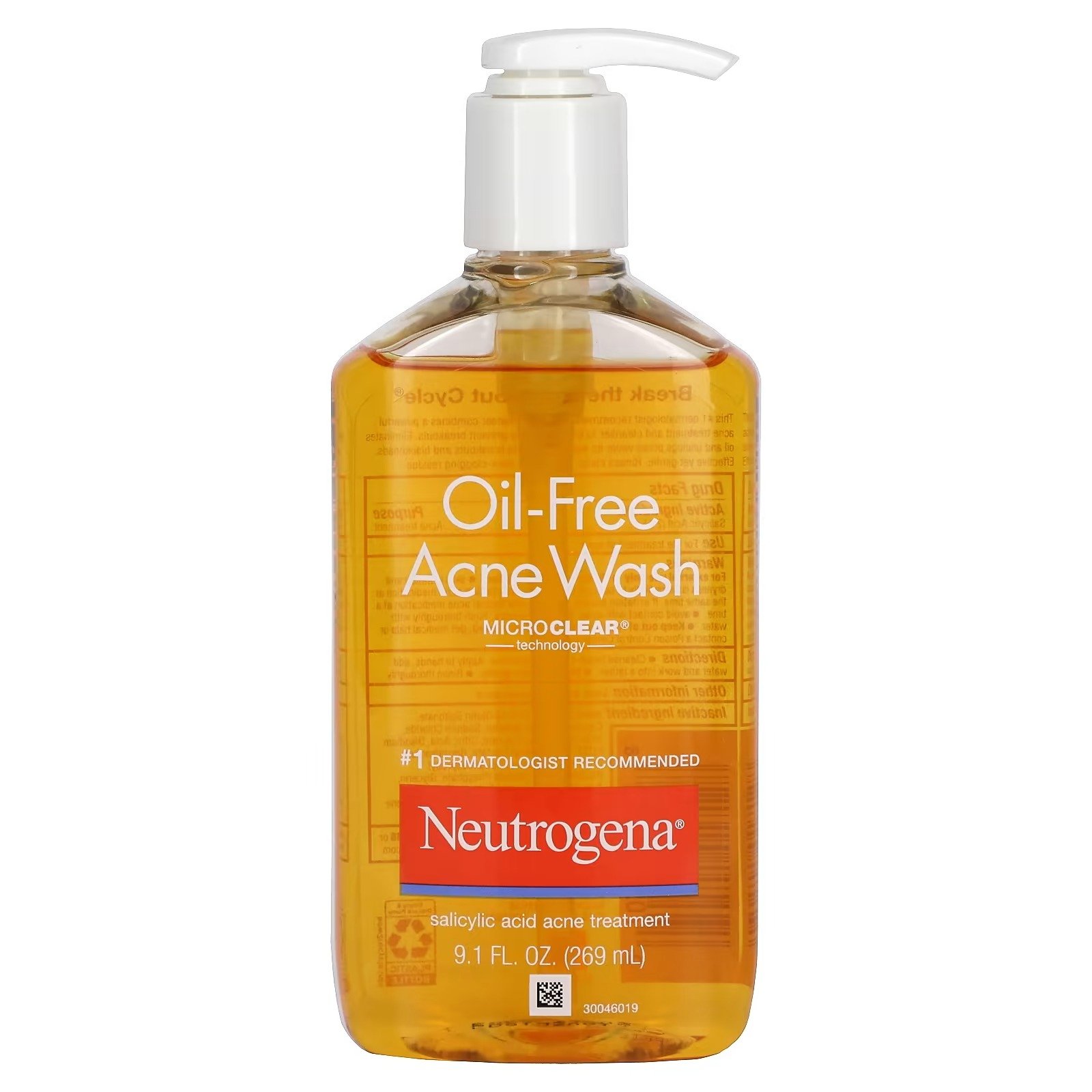A Guide to Keratosis Pilaris (KP)
We often get asked how to help those with keratosis pilaris - more commonly referred to as chicken skin or KP. The condition affects many people and is sometimes nicknamed "chicken skin" or "strawberry skin" due to its red, textured appearance. This often shows up as small bumps on the arms, legs, and buttocks and can sometimes be itchy and uncomfortable. In this article we’ll discuss what keratosis pilaris is, who is affected by it, and provide some tips and treatments to help reduce the appearance of dry, bumpy skin.
What is KP?
So what exactly IS Keratosis Pilaris? KP is a genetic skin condition in which an excess of keratin builds up in the pores of the skin and forms small bumps around the hair follicles. Usually they are found on the cheeks, upper arms, thighs and buttocks and they may feel rough like sandpaper when you touch them. They can be red or brownish in colour, and usually have no other symptoms. While typically not painful or harmful, they can be unsightly and cause irritation if scratched. The good news is that there are treatments available to help manage this condition.
Who Is Affected by KP?
KP usually begins during childhood and affects roughly 40% of people worldwide. It can affect both men and women of all ages but tends to be more common among young children and teenagers. It sometimes persists into adulthood but in most cases tends to improve with age. Those with sensitive skin may also be more prone to developing KP and atopic dermatitis is known to cause this condition (it's an inflammatory skin disorder that causes dryness and itching). Those with atopic dermatitis are therefore more prone to developing KP due to the irritation caused by the underlying skin condition.
Causes and Risk Factors of Keratosis Pilaris
Keratosis Pilaris (KP) is a common skin condition with various causes and risk factors that contribute to its development. Understanding these factors can help individuals manage and prevent flare-ups effectively.
Genetics:
KP often has a hereditary component, running in families.
Individuals with a family history of KP are more likely to develop the condition.
Keratin Overproduction:
KP involves an excess production of keratin, a protein that protects the skin.
Overproduction of keratin can lead to the formation of small, rough bumps around hair follicles.
Skin Dryness:
Dry skin exacerbates KP symptoms.
Regularly moisturizing affected areas can help soothe and alleviate the condition.
Cold Weather:
KP symptoms may worsen in cold and dry weather conditions.
Harsh environmental factors can contribute to increased skin dryness and irritation.
Hormones:
Hormonal changes play a role in the development and severity of KP.
Puberty, pregnancy, and menstruation can trigger hormonal fluctuations that impact the skin.
Understanding these causes and risk factors allows individuals to adopt targeted strategies for managing and preventing KP. Incorporating practices such as moisturizing, avoiding harsh environmental conditions, and considering genetic factors can contribute to a more effective approach to dealing with keratosis pilaris.
Symptoms of KP
The primary symptom of keratosis pilaris is small red bumps on the arms, legs, buttocks, or other areas affected by the condition, however they can also be flesh-coloured. These bumps may be scaly or rough to the touch and may itch from time to time. In some cases, these bumps may become inflamed or irritated if scratched too much.
Tips To Prevent Flare-Ups
Avoid shaving and waxing. These are two very harsh and abrasive treatments that can actually trigger hyperkeratization and trigger flare-ups.
Avoid taking long hot showers or baths as this can further dry out your skin, exacerbating your condition.
We’ll also say, bar soap is probably not your friend, neither is a very foaming cleanser or body wash (usually when they’re extremely foaming they tend to be more drying, and drying is not what you want).
Skip self tanners. Are self tanners going to trigger it? No. But are self tanners going to make it worse? Maybe. Self tanners accumulate in the keratin and therefore enhance the appearance of the hyperkeratinized hair follicles. We would shy away from self tanners if you are self conscious about the look of your KP as it will make it more prominent.
If you are living in a very dry climate, a humidifier should be your new bestie. It will soothe your skin over time and keep it much more supple.
Maintenance Therapies
In the shower, use a cleanser that is loaded in alpha hydroxy or beta hydroxy acids (glycolic, lactic, or salicylic acids). Use it on your arms, legs, and backside five minutes before jumping into the shower to give it a chance to do its thing before you wash it off with lukewarm water. Ones that we like are Neutrogena’s Oil Free Acne Wash (this is way too strong for the face, in our opinion, but thicker skin on the body can handle it well). It is a salicylic acid acne treatment but it’s also a nice and affordable option that you can use in place of a shower gel. Glytone also has an exfoliating wash that is specifically formulated for the body, which is made with vitamin e that adds extra hydration.
Neutrogena Oil Free Acne Wash
Treat and help prevent KP with this powerful treatment cleanser. Not only does the oil-free formula gently cleanse deep into pores for clear skin, it contains Salicylic Acid to help get rid of KP and help prevent future breakouts. Rinses clean without overdrying or irritating skin, is oil-free, noncomedogenic formula won't clog pores.
Daily body wash helps erase rough bumps and uneven skin texture to reveal smoother, glowing skin. Leveraging 8.8% Glycolic Acid to deeply cleanse, exfoliate dull, dead skin cells and resfurace skin.
For the redness caused by KP, arnica can also help minimize its appearance. The gel by Boiron is worth a shot and great for those bothered by any redness but who cannot afford in office laser procedures. This homeopathic medicine is made from a mountain daisy. Odorless and non-greasy, the gel is cooling and quickly absorbed into the skin.
When you’re looking for a body moisturizer tackling KP, you want one that is loaded with either an AHA like lactic or glycolic acid or even urea (like in the Eucerin product below). Amlactin has 12% lactic acid in their formulation and we love it at But More Importantly. We would recommend using it daily, after you shower when your skin is still damp, and again before you go to bed if you so desire.
Eucerin Urea Body Lotion
Contains a unique combination of ingredients – Urea, Ceramide and other Natural Moisturizing Factors (NMFs) – which bind moisture in and repair skin´s natural protective barrier to prevent further moisture loss. The formula has been clinically and dermatologically proven to deliver immediate relief and intense, long-lasting moisturisation, delaying dryness and roughness.
This moisturizing lotion contains clinically proven 12% lactic acid that boosts the skin’s natural renewal process through gentle exfoliation.
In-Office Procedures
For those looking for a more permanent solution for their keratosis pilaris symptoms, there are several in-office procedures available as well: laser hair removal can definitely help the plug that forms around the hair follicle. IPL can also target a little bit of the redness and hyperpigmentation that sometimes forms with keratosis pilaris. If all else fails, you might look into a fraxel resurfacing laser that helps to smooth out the skin while promoting fresh collagen production. In office chemical peels and microdermabrasion treatments can also help, but they provide more symptomatic relief than longer term solutions.
Keratosis Pilaris (KP) can be frustrating but thankfully there are treatments available that can help alleviate the symptoms while preventing further flare-ups from occurring. From topical creams containing lactic acid and urea to laser resurfacing procedures - with proper care using appropriate products you'll have smooth, bump free skin in no time.
But More Importantly is the ultimate destination for finding the best cosmetics around. We take on the task of sifting through a vast array of options to find the most useful and expertly-recommended items that you can buy. Our team has recently scoured the market for everything from exfoliants to niacinamide, acne mistakes, acids and sensitive skin staples. Our links are regularly updated to ensure that you get the best deals available, so make sure to check back often for new suggestions!



















